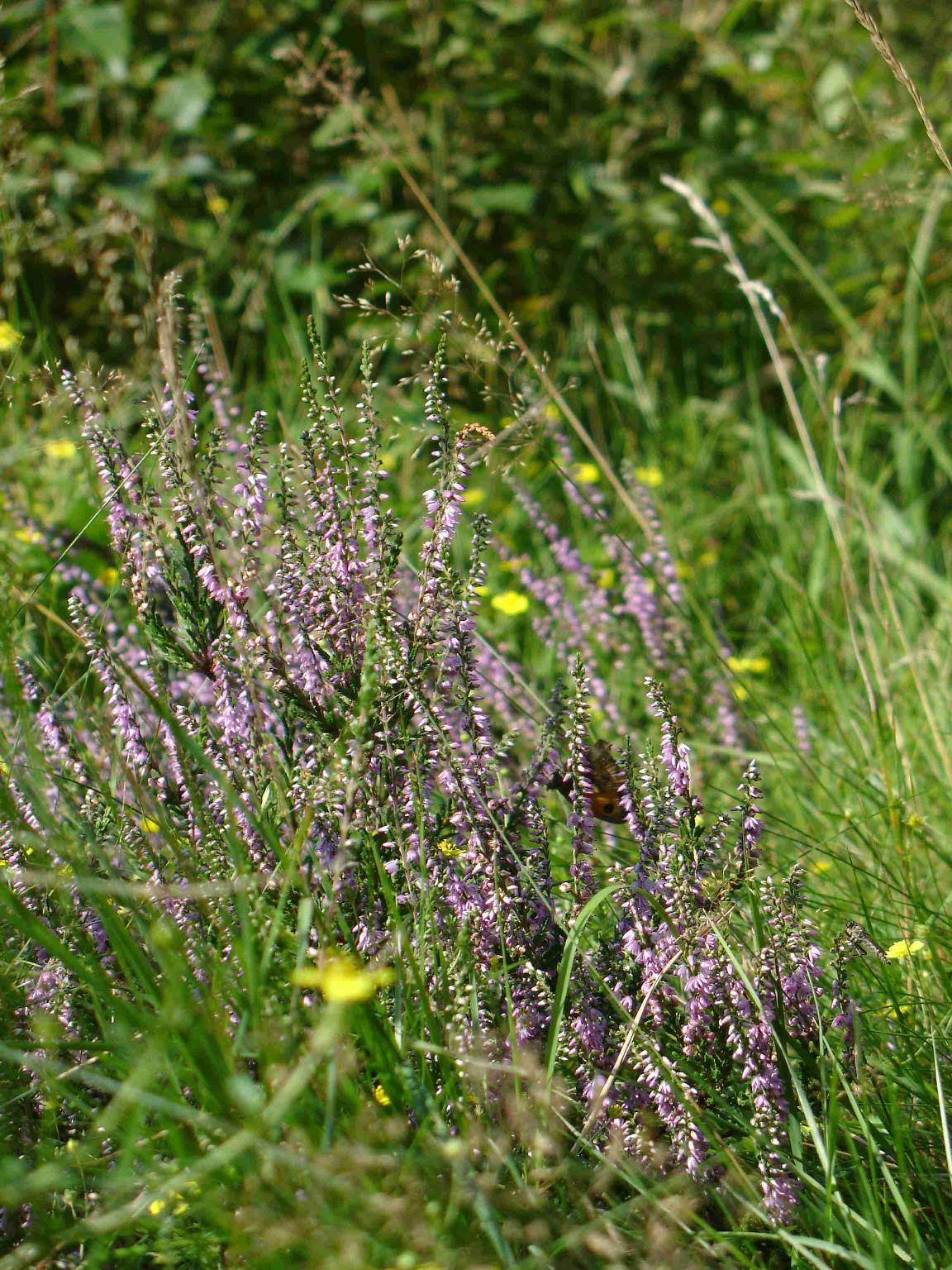Stanmore Common Nature Trail
Short trail post 7:
This open area is Oakmead, named after the huge multistemmed pendunculate oak which dominates the open area. The question can be posed; is this one tree that was coppiced at a much earlier date and then each shoot left to grow? If so it is old indeed, at least 200-300 hundred years. However it may be a group of trees, perhaps from a cache of nuts left by a squirrel or jay.
The tree has had surgery done to it as one bough was so heavy it almost split the tree in two. You can see the scar left as the tree healed itself.
In late summer look for the blue pom-pom flowers of devils-bit scabious Succisa pratensis.

Image: Devils-bit scabious by Steve Bolsover
Scattered among the grass are clumps of heather (ling) Calluna vulgaris. Heather is native to Stanmore Common and is precious. It is a characteristic component of lowland acid grassland and heathland, a habitat that is increasingly rare due to loss to farming and building.

Image: Heather by Steve Bolsover
The woodland ahead is open and light and supports a good ground flora. In late summer look for the green flower spikes of wood sage Teucrium scorodonia, a relative of dead-nettle that is characteristic of acidic soils.

Image: Wood sage by Steve Bolsover
To
description for short trail post 8
More on some of the birds you are likely to see or hear on the Common
More on the three species of deer on the Common and their tracks
Click
here to learn more about the Harrow Nature Conservation Forum including
guided walks and conservation workdays.






